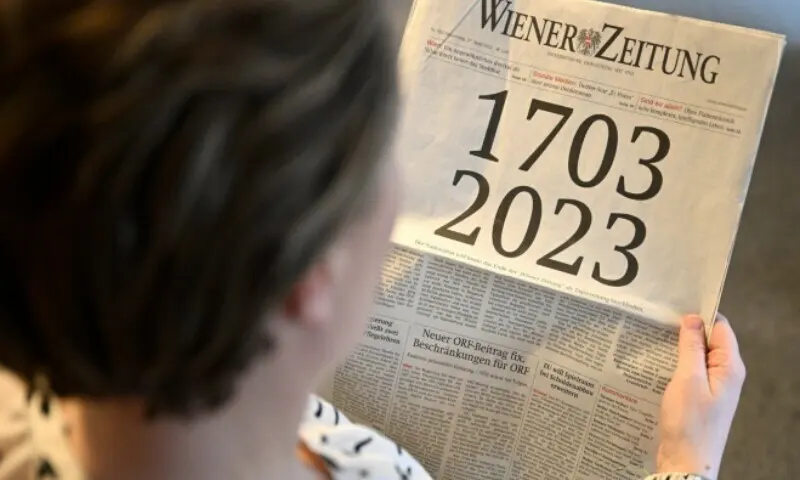One of the world’s oldest newspapers still in print, Austria’s Wiener Zeitung, will primarily move online, after a decision on Thursday by the country’s parliament.
The development marks the final step in a years-long dispute between the Austrian government and the newspaper about the future of the state-owned daily.
Founded in 1703 under the name Wiennerisches Diarium, and later renamed Wiener Zeitung in 1780, the formerly private bi-weekly paper was nationalised by Emperor Franz Joseph I of Austria in 1857, becoming the country’s official gazette.
“It is adopted with a majority,” Norbert Hofer, the third president of the parliament, said of a new law to primarily move the publication online from July 1.
The paper will maintain a minimum of ten print publications per year, depending on the funds available.
The Wiener Zeitung was in 2004 ranked as one of the oldest newspapers still in circulation, the World Association of News Publishers told AFP.
The newspaper’s role as the official gazette, its main source of revenue, will move to a separate state-owned online platform.
The government argued that this was in line with a European directive to centralise and publish official information online.
Meanwhile, the Wiener Zeitung will establish a media hub, a content agency, and a training centre for journalists.
“Some fear that the government just wants to keep the Wiener Zeitung brand with its 320-year-old history, while nobody knows what the future publication will look like — whether it will still be serious journalism,” its vice managing editor Mathias Ziegler told AFP.
Almost half of the newspaper’s over 200 employees — 40 of whom are journalists — could be laid off, according to its trade union.
The Wiener Zeitung has a circulation of about 20,000 on weekdays and about twice as much on weekends.
EU Commission Vice President Vera Jourova told Austrian news agency APA that she was “not happy with the situation”.
“I think the Wiener Zeitung played a good role in informing people over the years”.
Several hundred people took to the streets in Vienna on Tuesday to protest the government’s move.—AFP










